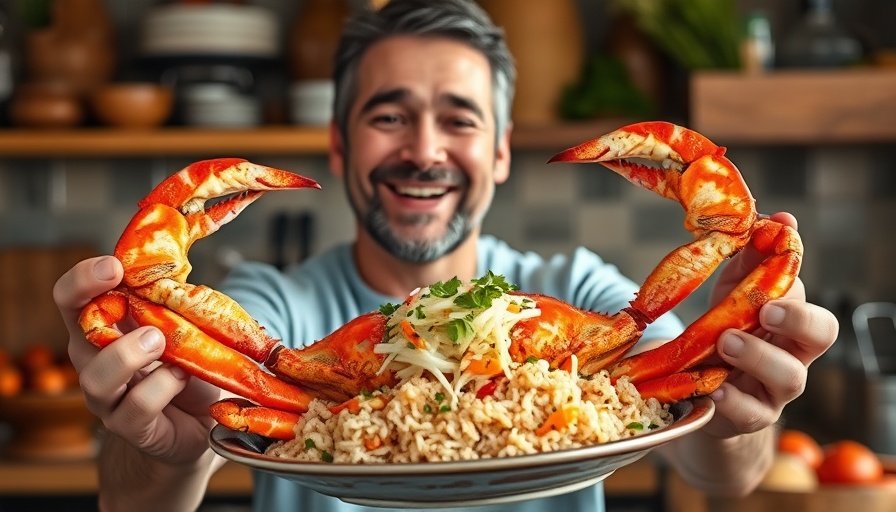
Discover the Delight of Arroz con Cangrejo: A Peruvian Treasure
The world of Peruvian cuisine is rich in flavor, tradition, and heritage. Among its delightful offerings, arroz con cangrejo, or crab rice, stands out as a dish that encapsulates the sea's bounty right on your plate. Made with fresh crab and aromatic spices, this dish speaks volumes about the culinary expertise and creativity found within authentic Peruvian recipes.
Why Arroz con Cangrejo Should Be on Your Menu
This hearty dish consists mainly of two star ingredients: crab and rice, which are complemented by a blend of ingredients such as garlic, onion, and ají amarillo, giving it that signature Peruvian touch. The simplicity of the base ingredients allows for flexibility, enabling chefs to incorporate unique twists to the dish, making it an ideal candidate to showcase at your restaurant.
Step-by-Step: Crafting Your Own Arroz con Cangrejo
Crafting a perfect arroz con cangrejo involves a meticulous but straightforward process. First, boil the crab until tender, ensuring every bit of flavor is captured in your cooking liquid. Then proceed with sautéing onions and garlic in olive oil, infusing your base with rich aromas before adding rice and the all-important crab meat. A dash of white wine enhances the flavors, while a final bake in the oven ensures optimal texture.
Pairing Recommendations for Perfect Presentation
To elevate your dish, consider pairing it with a salsa criolla, a vibrant mix of onions, cilantro, and lime, which brings freshness and acidity that balances the richness of the crab. A sprinkle of fresh herbs not only adds color but also complements the dish's flavors beautifully.
Risks and Challenges in Perfecting the Dish
However, even seasoned chefs can face challenges when preparing arroz con cangrejo. Sourcing high-quality crab is paramount, as its freshness greatly influences the final taste. Additionally, ensuring the rice is cooked just right—neither too sticky nor too dry—requires practice. For restaurant owners, consistency in preparation will keep your customers coming back.
Beyond Arroz con Cangrejo: Expanding the Peruvian Experience
In your quest to offer authentic Peruvian experiences, explore including other traditional dishes such as lomo saltado and ceviche peruano on your menu. These dishes not only enhance your culinary offerings but also introduce patrons to the broader spectrum of Peruvian street food and delicacies.
Final Thoughts: A Perfect Addition to Your Culinary Lineup
Arroz con cangrejo is more than just a meal; it’s a celebration of Peru’s coastal flavors and cultural heritage. Offering this dish can not only delight your guests but can also foster a deeper appreciation for the richness of Peruvian cuisine in your establishment. So find your best crab supplier, gather your ingredients, and let the delicious journey begin!
As a restaurant owner, there’s no time like the present to diversify your menu with arroz con cangrejo. It’s not just about adding a dish; it’s about offering an authentic slice of Peru that your customers will cherish.
 Add Row
Add Row  Add
Add 




Write A Comment